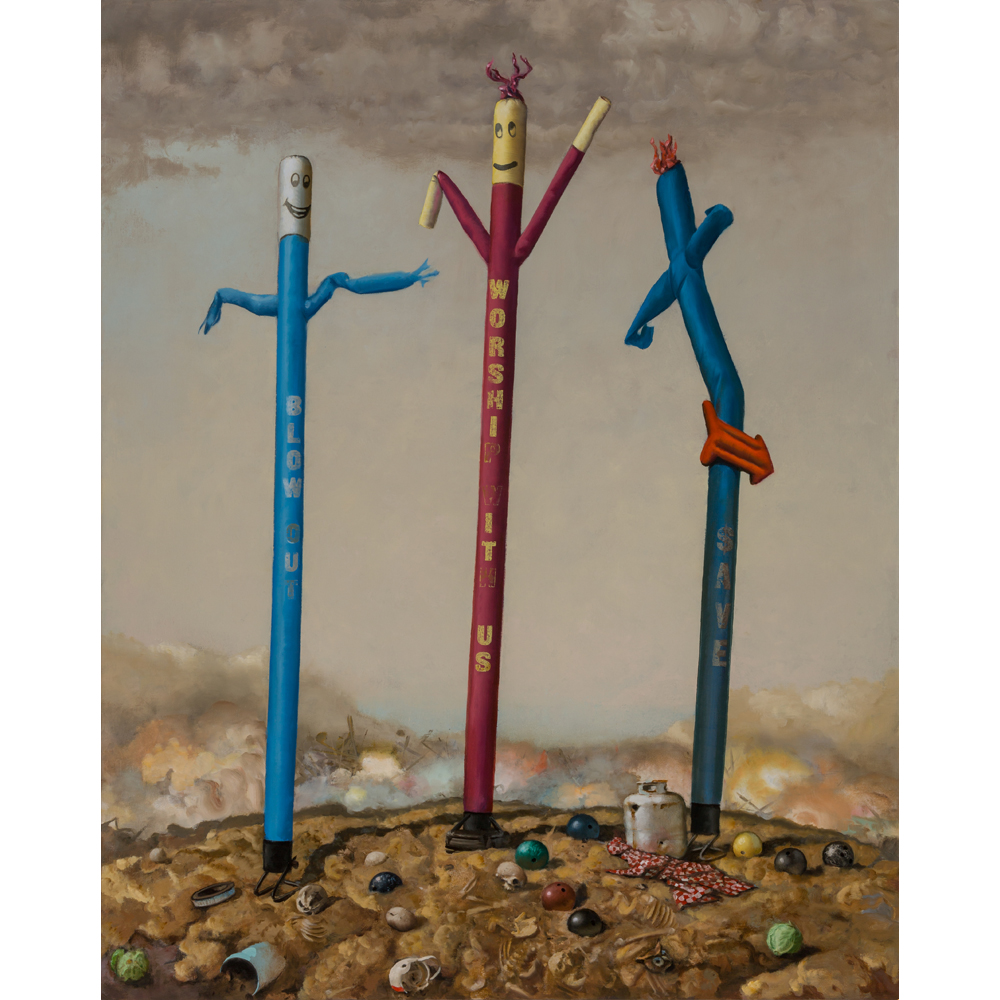Artwork Description
Scott Greene – Trinitas
Dimensions: 50 x 40″ finished size / 50 x 40″ unframed
Year: 2015
Medium: oil on canvas over panel
Scott Greene’s oil painting, Trinitas, is a re-imagining of the traditional, religious trinity, composed of the father, son, and holy ghost. Greene has rendered a dystopian scene devoid of any specific temporal placement, where inflatable tube men—symbols of consumerism and inherently capitalism—have erased human presence and religion as it was once understood. In this case, the characters in the trinity represent fundamentalist consumerism, beckoning the viewer with not only their smiling encouragement and movement, but also their seductive, subliminal reference to the piety of religion. Greene also references the detritus of human consumption in the landscape of the painting. Forgotten items and human skeletons below the figures compose Greene’s rendition of a Memento Mori.
Scott Greene’s work is not associated with a definitive time period, but instead, works to integrate art historical and classical elements into a more contemporary approach. Greene’s work functions as a form of socio-political commentary and “uses the composition of a historical work as a matrix for making a painting that humorously examines the relationship between politics, nature and culture”. Greene draws on themes such as beauty, popular culture, and the natural environment in an additive artistic process that emphasizes the visual and temporal effects of building rather than executing a work in a single instance. After studying in California and receiving his BFA in painting from the San Francisco Art Institute, Greene moved to New Mexico, where he received his MFA in painting and has since lived for almost 30 years. Greene’s work derives much of its influence from this matrix; where he describes that, “the expansive space, vivid light and western frame of reference informs the narrative content in my work, and the alien beauty of high desert skies serve as backdrops for many compositions”. Greene also touches on the complex interplay between beauty and environmental exploitation within his oeuvre—an issue he sees as being both pertinent to and prevalent within New Mexico, today.

